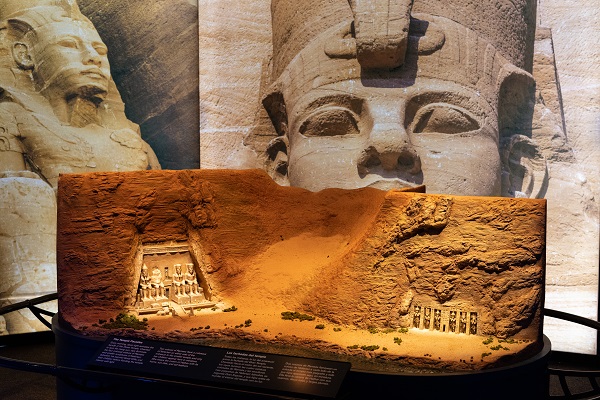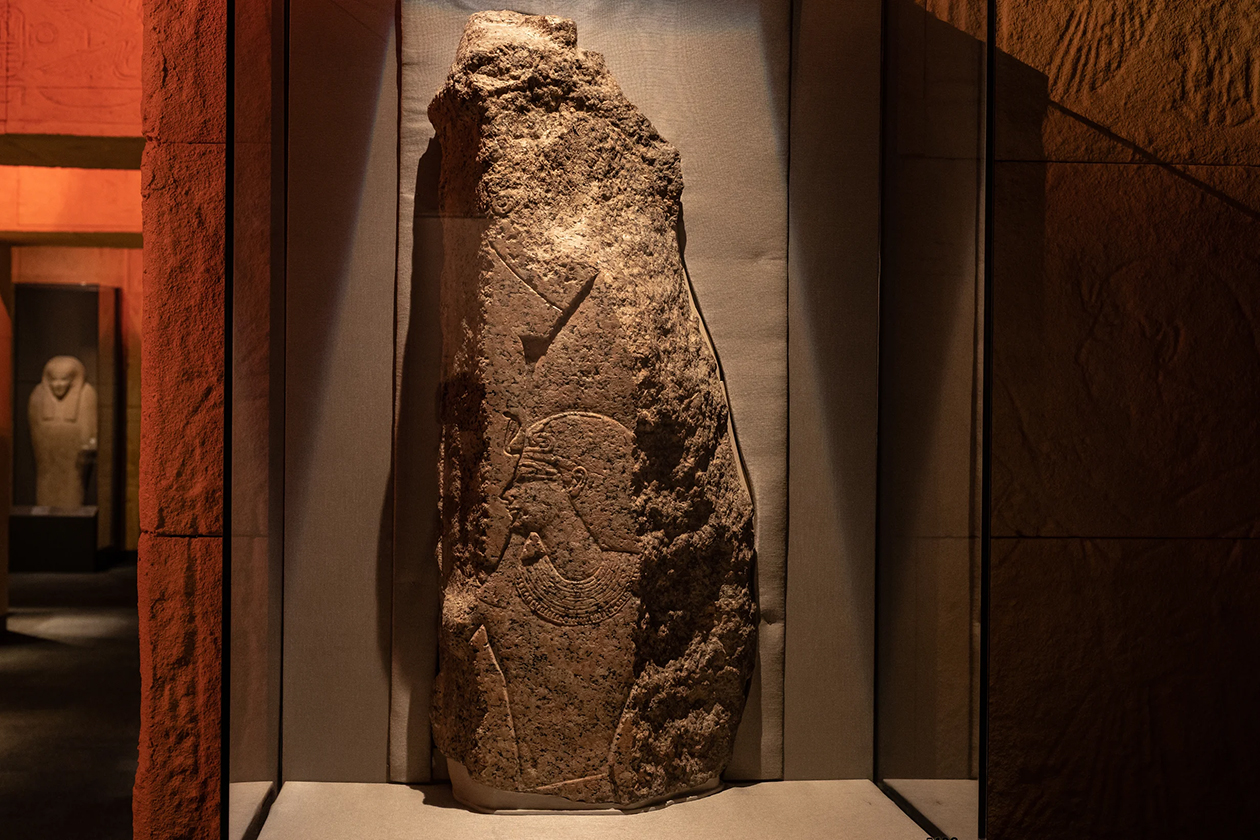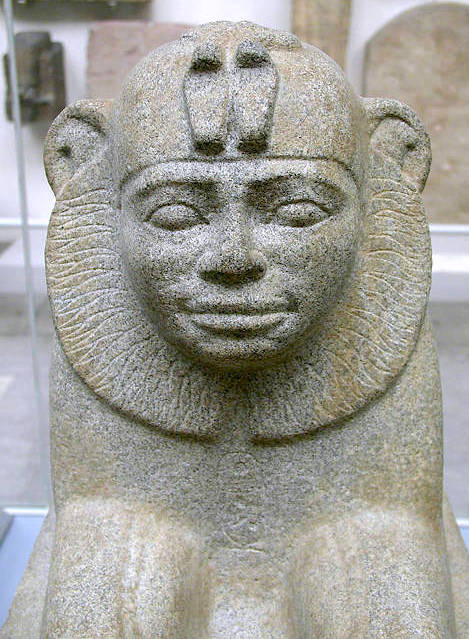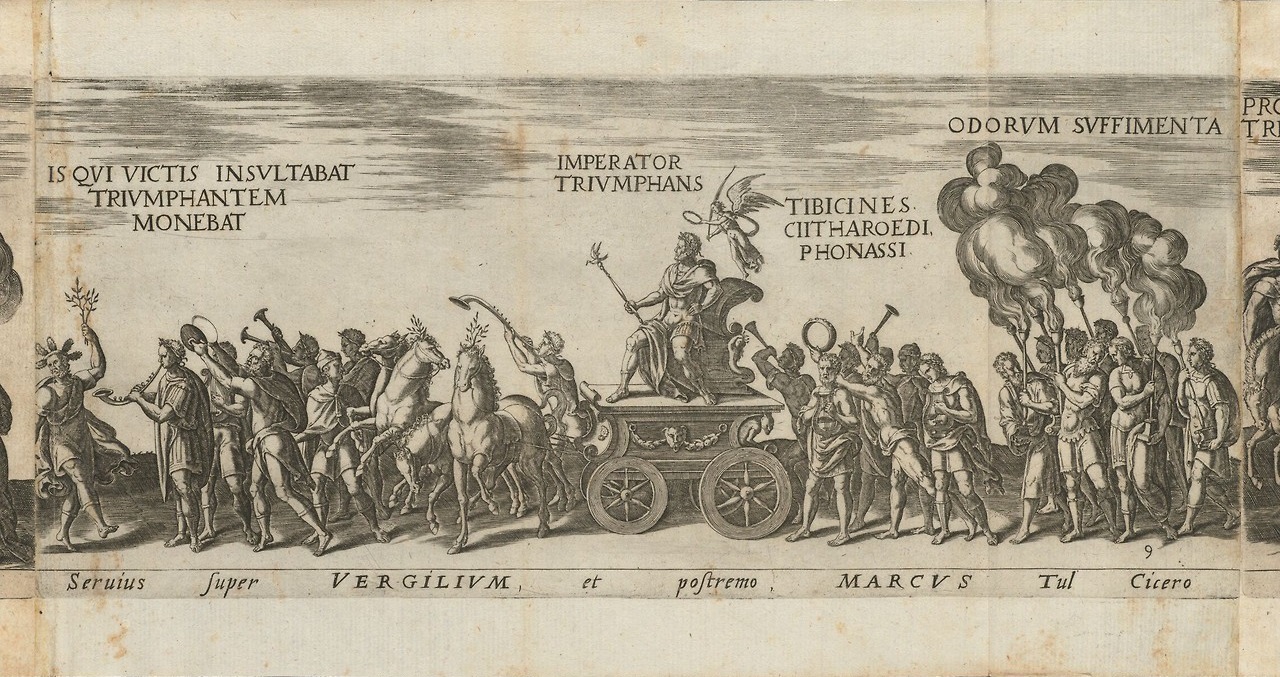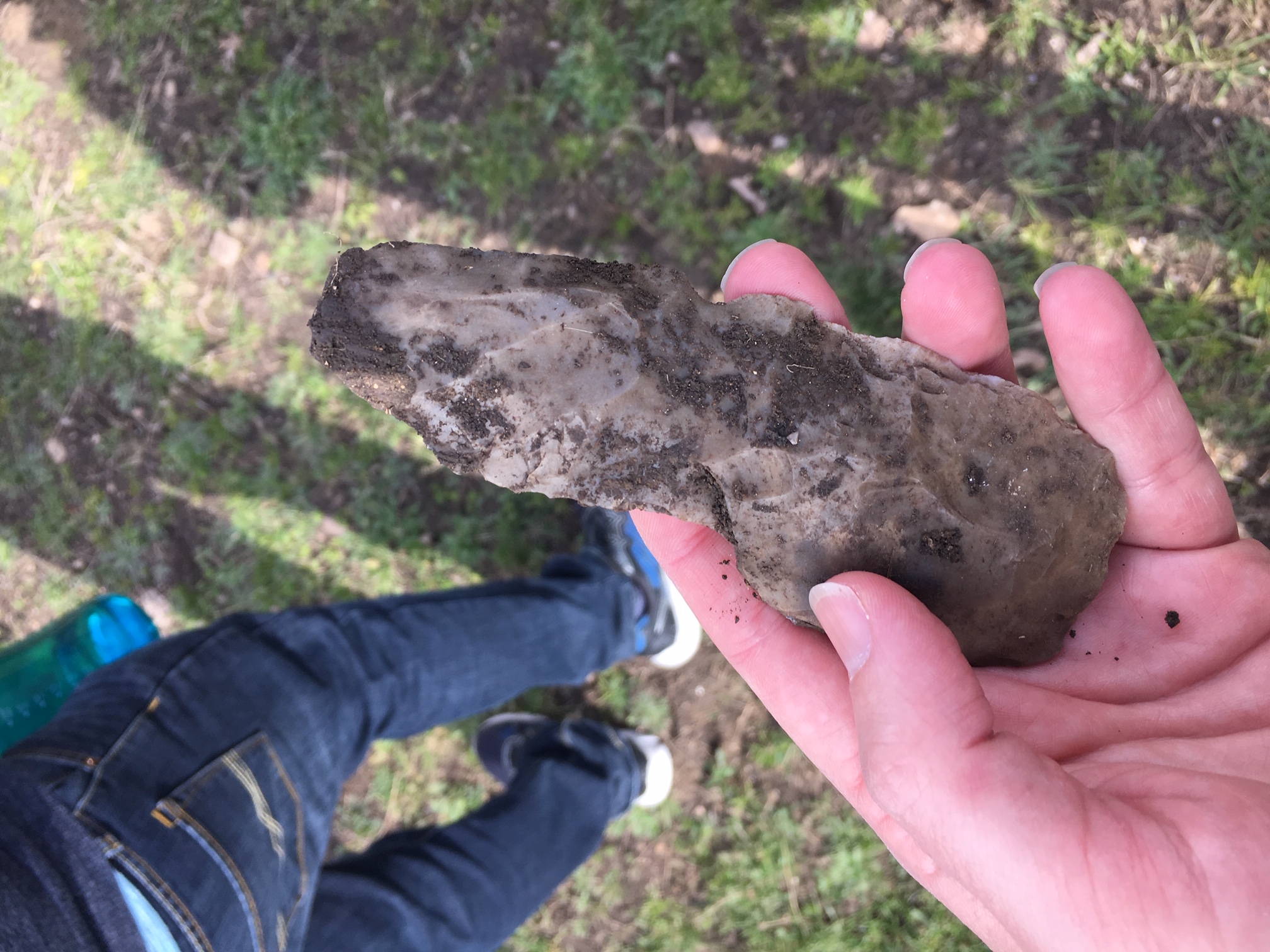By Corey Green, HMNS Discovery Guide
In Ancient Egypt, jewelry pieces had meaning beyond the vanity of beautification. Jewelry patterns, materials, and all the way down to the very colors carried their own connotations of meaning and symbolism to the people who wore it. Most designs used beads or colored minerals inlaid in various metals. Those beads could be carved into designs evoking images of gods, or protective symbols, animals, or plants. Inlays could portray whole ceremonies performed by the wearer or by gods protecting the wearer. It could be as simple or elaborate as one could afford. There were six pigments to choose from in Egypt: blue, green, yellow, red, black, and white. Every one of them evokes images of life, death, regrowth, rebirth, purity, longevity, etc.
This broad collar from the New Kingdom, around 1370 B.C., is made from faience, a type of fused glass, and intricately beaded into the pattern created in the image.
 (from http://realhistoryww.com/world_history/ancient/Misc/Egypt/Jewelryb.htm)
(from http://realhistoryww.com/world_history/ancient/Misc/Egypt/Jewelryb.htm)
Something like this would be a fairly affordable piece for an average person in that era. The opaque glass is made from grinding pigments, mixing with sand, and firing it as they would with ceramics. Blue would symbolize the life-giving water of the Nile or the sky (home of the gods); yellow is longevity, incorruptibility; green for new growth and new life as if in spring time; white is purity; and red is victory, life-force.
By comparison, here is King Tut’s neck plate, called a “pectoral:”
(from http://news.bbc.co.uk/2/hi/science/nature/5196362.stm)
This is made from gold, with inlays of carnelian, lapis lazuli, turquoise, and super-heated fused sand created by a meteorite hitting desert sand.
It’s good to be the pharaoh.
In a world full of uncertainties, diseases could arise without explanation or cures, environmental conditions whose vagrancies could devastate a population, not to mention wars, taxes, religious factors that dictated daily life. These symbols, be it colors, or images evoking protection from the gods, gave an emotional stability in their meaning and at least a peace of mind that one was doing all they could to insure a measure of success and order out of seeming chaos.
Additionally, these jewelry pieces would entirely dictate status. The ancient Egyptians were all about knowing their place in the world. Their society was very strictly stratified, and jewelry was one very outward example of displaying that status. Wealthy citizens, nobility and royalty especially, used materials that were very difficult and/or expensive to attain. These could include, minerals imported from across the known world: lapis lazuli, carnelian, turquoise, malachite, obsidian, basalt, etc. in addition to metals from across the known world: gold, silver, bronze, etc.
Lower classes tended to use found objects, such as shells and rocks—perhaps found in their environment—or inventing materials they can craft, such as clay or glass (faience). When used, the metals used by the lower classes were usually no more expensive than copper, or more rarely a very thin gold foil.
Lastly, the Egyptians used this jewelry because it was beautiful. Some things about human nature have not changed, and we always want to look beautiful and feel fancy. Clothing in ancient Egypt was fairly unremarkable except by its presence. The fact that one had it, and had the servants to clean, iron, or weave it in the first place was the height of fashion and status. Therefore, the way that they “dressed up” clothing, so to speak, was to decorate it–not with dyes, but with jewelry.
These pieces, as expensive as one could buy or handmade regardless, could be given as gifts, just like we do today. Husbands often bought jewelry for their wives during holiday seasons. Royalty might give jewelry as rewards for service or loyalty to the crown. This type was often given to men for military prowess:

(from http://www.ancientegyptonline.co.uk/jewellerycollar.html)
Even then, jewelry was not just for women.
Perhaps we modern folks have more options in terms of color choices and materials for our jewelry, yet we still share a love, as our ancestors did, of looking good with what we’ve got. As this holiday season approaches, we’re really taking a part in history by giving or receiving jewelry.
At least, that’s what I tell myself as I walk through our gift shop and ogle the pretties.



